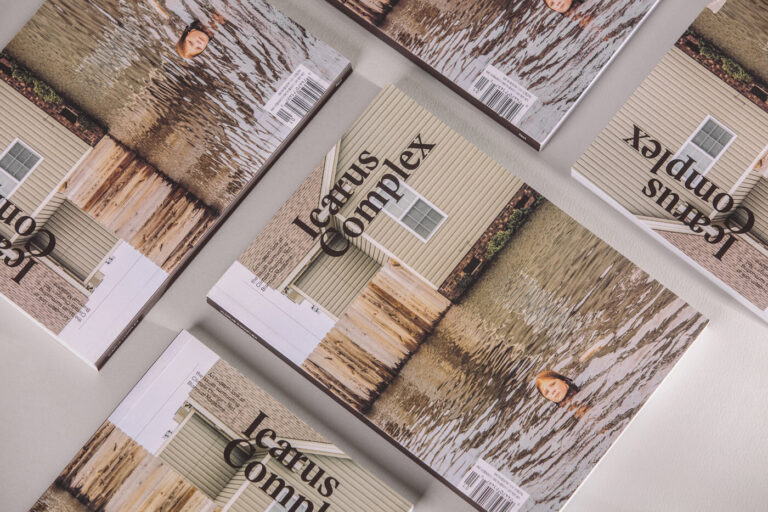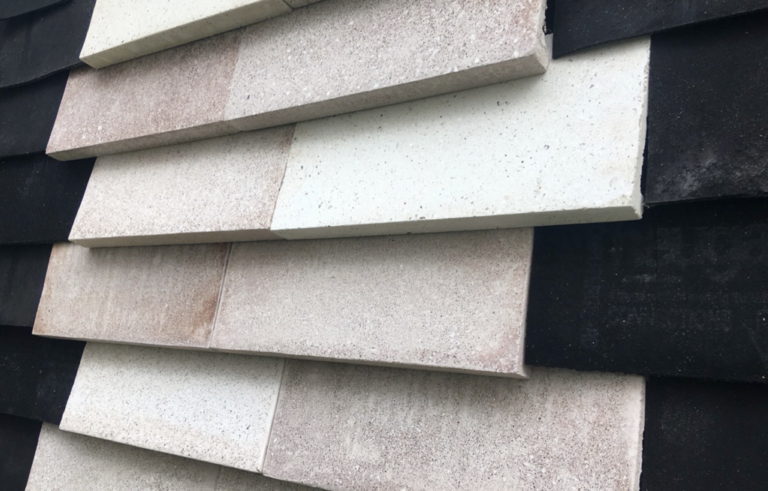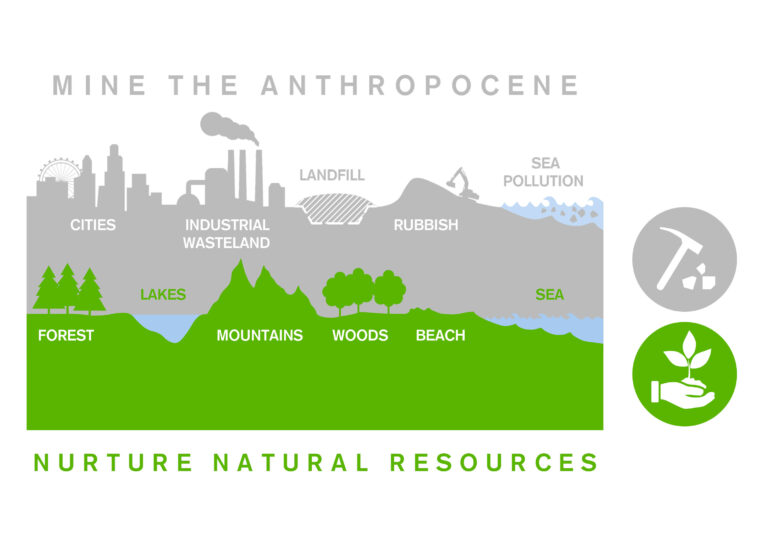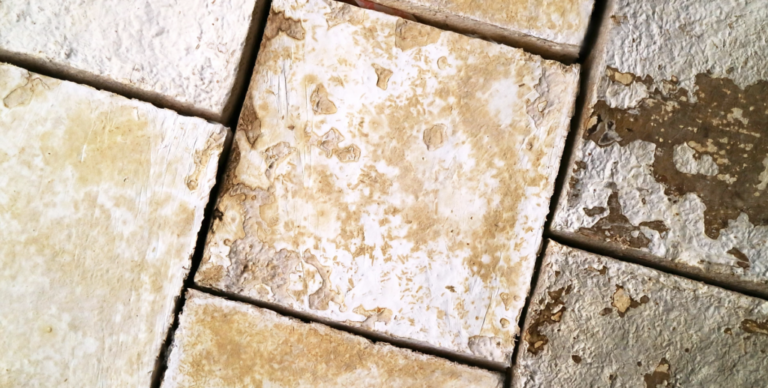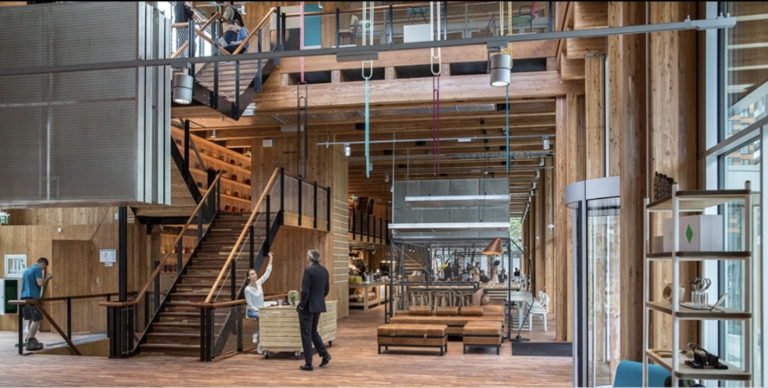Journal: 15th December 2020
Icarus complex
Original article by Duncan Baker-Brown and featured on Icarus Complex on the 19th June 2020.
Get the built environment working properly and sort out the Climate & Ecological Emergency
2019 feels like a very long time ago, and definitely a different world away. The Covid-19 pandemic has forced us humans across Planet Earth to completely change the way we operate in the short, medium, and perhaps the longer terms. Despite the dreadful numbers of people dying, the complete collapse of many corporations and multinational industries, lockdown has allowed many people the opportunity to breathe clean air, see whole mountain ranges for the first time, and hear bird song. The rest of the natural world is appreciating this pause from the normal ravenous appetites we have for consuming raw materials to make stuff which tends to get thrown away – all in the name of the twin corporate gods of growth and progress.
Can I ask you to think back to 2019 again for a moment? You may remember that there had been another major shift in humankind’s focus of attention. 2019 was the year that over 1,330 jurisdictions, national and local governments, declared a Climate and Ecological Emergency. This means that over 814,000,000 people are currently represented by regional governments who have made this declaration. And it doesn’t stop there, these very same regional governments have then enshrined into law hugely ambitious Net-Zero Carbon targets varying from 2027 (not likely) through to the more realistic, but still requiring a huge change in behaviour, 2050. Some national governments have now followed suite.
Perhaps these very same cities states and regions are best placed to lead the way towards implementing new ways of living in a post-Covid-19 world? After all it will be the very same bureaucrats, academics, business owners, politicians and citizens who will act upon their noble declarations from 2019. Even during lockdown cities are still the main recipients of stuff for humans to consume, whether that is food, energy, water, materials for construction buildings, products, cars etc., and they will be the main mechanisms that could create a radical change in the way these systems work. At present humans are unique on Planet Earth; we throw things ‘away’ and make waste – lots of it. In the rest of the natural world there is no such thing a waste, as surplus material from one ecosystem is food for another. It’s only human systems that act as a ‘linear metabolism’; we ‘take, make and throw away’. Perhaps there is a way to turn these linear systems back on themselves and create closed-loop circular metabolisms that emulate natural ecosystems’?
The idea of creating human-made closed-loop systems has been discussed since the mid 1970’s when Prof. Walter Stahel architect and industrial analyst, presented preliminary ideas on this to the European Commission on the ‘The potential for substituting manpower for energy’. The paper described a future of an economy in loops, with its positive impact on job creation, economic competitiveness, reduced dependence on natural resources and the prevention of waste. Many people credit Stahel with coining the expression ‘Cradle to Cradle’ in the late 1970s. This was followed up in 2002 by the seminal text Cradle to Cradle, authored by former Greenpeace chemist Prof. Michael Braungart and architect William McDonough. The book’s sub-title is “Remaking the way we make things” which sums up what we now need to do. In other words, Cradle to Cradle promotes the wholesale behaviour change required to live in what is now more commonly known as a ‘Circular Economy’, in harmony with Planet Earth. A human-made Circular Economy is divided into two distinct closed-loops; the ‘Biosphere’ and the ‘Tech-Sphere’. In the former reside things made of organic material (timber etc.) that will one day literally be food (compost) for new organic matter to grow and make new organic material. In the latter reside all the technical gadgets and other human-made artefacts made of the multifarious metals, plastics, and other synthetic materials that will never decompose; the stuff that currently fills our oceans, landfill sites, our cities, and wraps our planet in what many people are calling ‘The Anthropocene’, the human-made geological layer. In a Circular Economy, old BMW cars will be source material for new BMW cars, not as the state of play of the moment dictates, merely recycled into minerals and plastics for low-grade road aggregates. In the Circular Economy, once one has invested in a sophisticated material or product one designs it to be continually re-used at that same level of sophistication.
To enable a successful Circular Economy humans, need to re-design the systems, networks, materials, products, buildings and cities, as well as to completely change our dependence upon fossil fuels, and avoid eating meat and flying, while facilitating a massive re-wilding programme. No wonder this feels too much to handle. However, we do have all the knowledge and tools to do what is required. For a start we can drastically reduce the production and consumption of fossil fuels. Why are we spending vast sums of money digging below ground when our primary energy source is up in the sky? This point is magnified by many recent news items stating that renewables are the cheapest energy source. Recently in the UK the daily production of clean wind and solar power has often peaked above 60% of the energy mix in the national grid with coal fired power stations turned off for weeks at a time.
It’s worth remembering that the design, construction, occupation, maintenance and demolition of the world’s built environment consumes about 50% of all raw materials annually. In the UK we consume over 600 million tonnes of new products every year, with over 200 tonnes of waste generated annually, and 125 million tonnes of this is construction waste. Over 45% of the world’s CO2 emissions are generated by our industry. So, there’s really no avoiding it, we (I am an architect) are currently part of the problem causing the global Climate Emergency and the mass extinction of species due to loss of habitat.
In 2017 I published a book ‘The Re-Use Atlas: a designer’s guide towards a circular economy’. I wrote it soon after completing the construction of Europe’s first permanent public building made from over 90% materials other people had thrown away. Known as the Brighton Waste House, this project helps to highlight the madness of constructing buildings in the UK, where up to 15-20% of materials arriving on site are thrown away. Our motto was ‘There’s no such thing as waste just stuff in the wrong place’. Whilst working on the ‘Waste House’ I was made aware of many projects around Europe (and beyond) that were tackling the challenges a circular economy presents us. So, my book became an atlas of real delivered projects that dealt with turning linear metabolisms into circular ones. I interviewed over sixty designers, makers, CEOs, commodity brokers etc., and divided the book into four main chapters that take readers on a series of steps towards genuine closed loop systems. We started with a chapter on RECYCLING which is the most basic thing one can do to reduce dependency on mining for raw materials. We then went onto RE-USE, then REDUCE and finally CLOSED-LOOP SYSTEMS. The rule was that projects had to be real, i.e., completed on budget and on time. I suppose the book acted as a positive good news story for me, and it’s some of these stories that I want to discuss briefly here.
Perhaps the biggest challenge humankind has is to learn how to responsibly manage Planet Earth’s natural resources, and to do this very quickly. Architects and designers are in a brilliant position to make a significant impact towards this. During the design of a building we make hundreds, if not thousands, of decisions about what our buildings are made of and how they should be constructed. We are intrinsically connected to the supply chain. Architects are actually ‘resource managers’. In effect we decide which natural raw materials our suppliers provide us with to work into the built environment. We also know better than most how buildings are put together, and so we should be good at de-constructing them – more of that later. If you buy into the idea that to reduce our negative effect on this planet we need to drastically reduce the consumption of new stuff (specifically raw materials), then you can see the potential we have for doing this rather quickly – and of course reducing the need for raw materials could facilitate a massive re-wilding programme.
We live in a world where you will get more gold from a tonne of discarded smart phones than a tonne of the best gold ore. I’ve heard people saying that there is more copper above ground now than below. We need to become ‘urban miners’ and re-work/ re-use previously made buildings, components, and material sources. We need to “Mine the Anthropocene” rather than send humans underground to dig up new stuff. With this new-found sensibility architects can apply emerging techniques such as ‘resource mapping’ to understand the real opportunities a place has for supplying locally-sourced materials for a new project, whatever it is.
Architects already have the ability and tools to design new buildings that will run as carbon neutral or carbon negative entities, but in addition these buildings can be ‘Material Banks’ for future buildings. This concept simply requires architects to design buildings so that they can be de-constructed some time in the future, thus reducing the need to mine for new natural raw materials in the future. The Madaster Foundation and others are looking into ‘Material Passports’ that will allow for building owners to have a record of all materials, components etc., that comprise a building. This obviously could be part of a BIM (Building Information Modeling) 3D computer model of buildings (its Digital Twin) and allows future owners of a building, say 40 years after it is constructed, to understand the potential for the building to be deconstructed and re-built. This sort of ‘big data’ approach to building is well established. It is an easy step to see how vast digital ‘resource maps’ of whole cities could be created so that if your construction was placed in say, Vancouver, you could plug into the local resource map and immediately understand the amount and type of material the city might have to offer your project. This may sound like pie in the sky, however Metabolic have done just this; they have mapped their source potential of the greater metropolitan district of Amsterdam.
Much of this may sound like future practice, but there are many examples of consultants involved in the deconstruction of large commercial buildings to sell for new projects. Rotor DC (aka Rotor Deconstruction) is currently deconstructing large parts of the World Trade Centre in Brussels for resale. Bellastock are part of a group carefully removing the façade and interior fixtures of the rather large Montparnasse Tower in Paris. Together with the University of Brighton, Rotor and Bellastock are part of the ERDF funded North-West Europe Interreg FCRBE three year project that will produce a directory of 1,500 suppliers contributing towards the de-construction re-construction industry, together with a ‘toolkit’ for clients advising them on how to make this idea work.
I was speaking recently with Petran van Heel of the Dutch national bank ABN AMRO. He was showing me around the €18 million CIRCL Pavilion in Amsterdam he had just completed. Designed to strict circular economy principles Petran pointed out that ABN AMRO, whilst being a financial bank were also a ‘materials bank’. When investing in the development of a building for a client it is far more attractive that the building is a material asset at the end of its life rather than a deficit requiring demolition and incineration. Maybe these Circular Economy principles will actually gain in popularity as they appear to offer a route to transition for financiers needing a way out from traditional capitalism?
The last ‘step’ in my book addressed future materials that would populate the ‘biosphere’; new emerging materials that can biodegrade at the end of their useful life. Of course, we have been using these materials for thousands of years. However, there is now increased research and interest in genuinely innovative materials such as mycelium (mushroom roots). Mycelium products are already replacing some plastics in packaging. Soon they will be replacing the most efficient insulation products that are currently made from the most environmentally challenging plastics; the very same plastics that take tens of thousands of years to decompose, and even then, they leach toxins into natural ecosystems. To make a point of how advanced these mycelium products are, my practice recently designed a new building for Glyndebourne Opera near the South coast of England. The insulation (supplied by Biohm) will be grown on site using a mycelium mix feed by grass cuttings from adjacent lawns. The frame of the building will be fallen timber from site. Internal walls will be made from wine corks collected on site and bound into bricks by more of Biohm’s mycelium mix! In addition, we are working with Local Works Studio collecting oyster and lobster shells (again from the opera house kitchens), combining it with waste chalk from the surrounding ground to make bricks and tiles for the building. The new pavilion will be made from waste streams generated from activity on site plus plants growing on site.
I believe the door is left ajar for practicing architects, students and educators to push open and take decisive action now. We will have to change the way we practice, teach and learn, but perhaps not as much as you would think. However, we must learn to share the successes and failures of our future endeavours more openly. In addition, our competitions and awards must put the climate emergency at the top of their requirements for success. But in the meantime, just keep in mind that whatever situation you find yourselves in you need to look at the reduction of all new incoming resources and the reuse of existing ones. Position that attitude with a mission to detail your buildings to be material banks for the future and your clients may not even notice a difference. The natural world will.
Duncan Baker-Brown is Climate Literacy Champion at The School of Architecture & Design University of Brighton and founder of BakerBrown, author of ‘The Re-Use Atlas: a designer’s guide towards a circular economy’ (RIBA Publishing) and curator of the annual ‘Waste Zone’ at FutureBuild.
